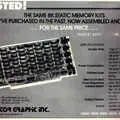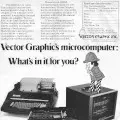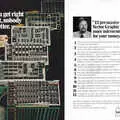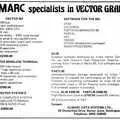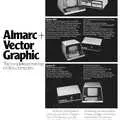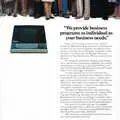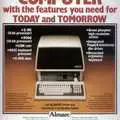
Vector Graphic Advert - July 1982
From Personal Computer World
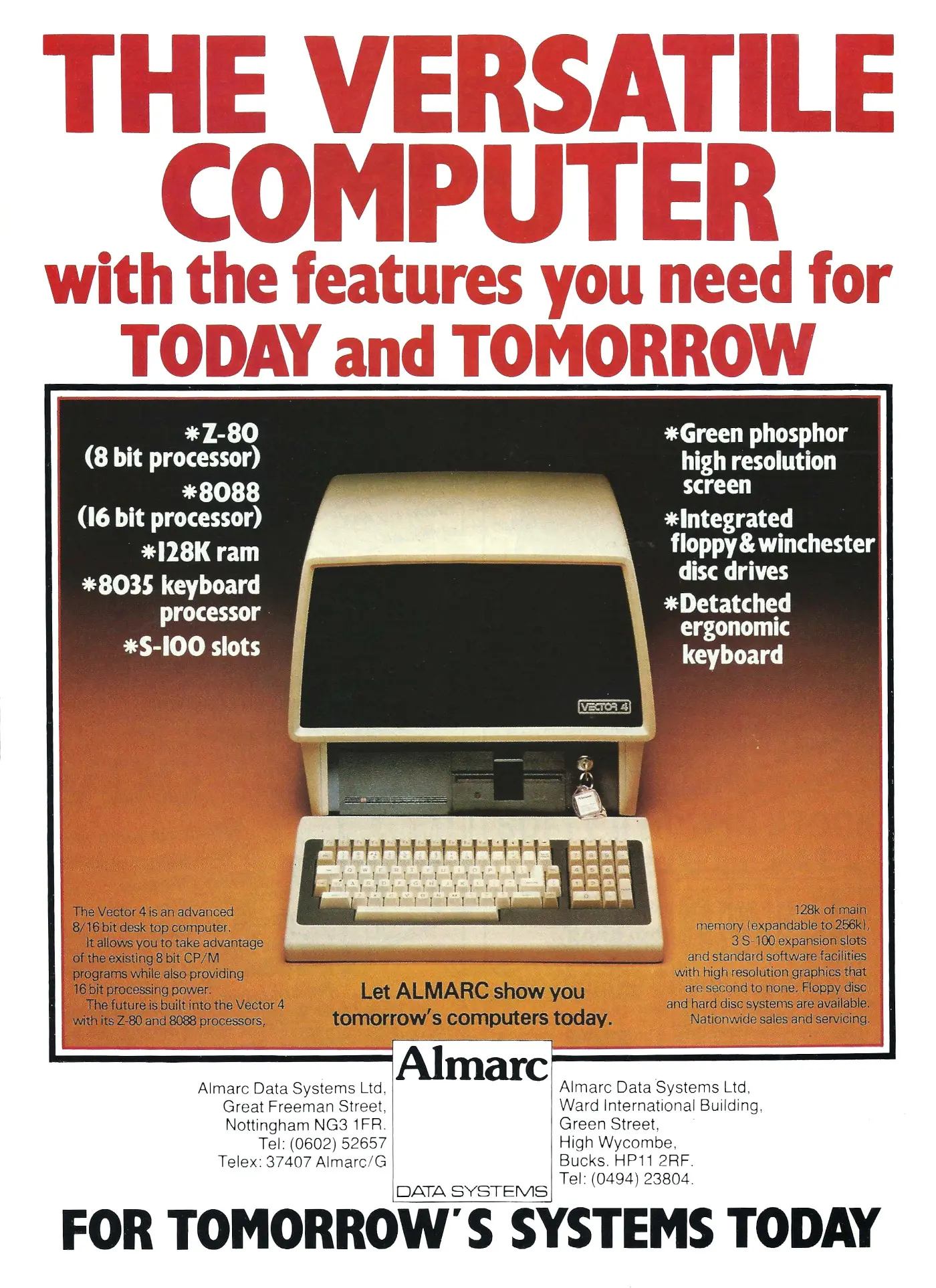
Vector 4: The Versatile Computer with the features you need for Today and Tomorrow
This advert is for the curious-looking Vector 4, from Vector Graphics of the US, as distributed by long-time UK distributor Almarc Data Systems.
Contrary to the company's name, this machine was noted to posses neither vector displays nor graphics in general - a comment that Personal Computer World's Guy Kewney pointed out wryly whilst announcing the arrival of the Vector 4 in the spring of 1982[1].
It was one of many machines around that were dual-processors - not in the modern sense, but literally having two entirely different CPUs - a 6MHz Z80B for 8-bit CP/M action and an Intel 8088 for more modern 16-bit software. As such it was a transitional machine between 8-bit and 16-bit computing.
It also included three fairly old-school S-100 slots, a type of bus that gives it a direct lineage to the old "first generation" micros like 1975's Altair 8800.
By November 1982, Vector had finally set up an actual UK office, on William Street in Windsor. The question asked in the trade press however was how long S-100 systems would stay around in the face of competition from IBM and DEC.
The answer, in Vector's case as a company, was about another two years, after which Lore Harp, one of the founders, left and the company finally fizzled out in December 1985 when it went into Chapter 11[2].
The failure to decide whether to take on the IBM PC or not has been given as a reason for the company's eventual failure.
Although Vector's systems were considered to outperform many others through good engineering, it was thought that it largely because true networks had yet to really take off.
This was a possible reason why people were still buying S-100 multi-user and multi-processor systems, even though they could often cost two or three times that of a standard microcomputer[3].
Also in 1982 Almarc, "based on this experience [with Vector Graphic]" - no doubt a euphamism for copying, as the machines were considered as quite similar to Vector's - actually launched its own micro system, called the Series 8.
It retailed for £4,000 (about £19,100 in 2025 money), which was not cheap, but at least it was announced as being "mainly for the business market".
Most of Almarc's Series 8 models were multi-user and they came with a minimum of 3MB disk storage. Apparently the machine's MP/M-II multi-user software was even "usably reliable"[4]. MP/M was the multi-user version of CP/M[5], the standard operating systems for nearly all business micros of the period.
A couple of years later in 1984, Almarc found itself in financial difficulties. By this time it appeared to have moved on from distributing Vector Graphics' systems and was shifting its own "Spirit Micro", which was thought good enough to save after Almarc's eventual collapse.
It was bailed out by High Technology Electronics Limited, part of the giant Grand Metropolitan Group (which also owned Burger King at one point), in a deal struck on the 21st January, although this did not include the company itself - the fate of which was left to the receivers.
The purchase of the assets, company name and premises ensured that the Spirit micro would remain available and supported throughout the 30-strong dealer network[6].
Meanwhile, Dr. Robert Harp, husband of Vector graphic's co-founder Lore Harp and MD of the company, had left Vector to become MD of Corona Data Systems.
Corona Data Systems announced a raft of IBM compatibles at the end of 1983, including a portable machine aimed at the Osborne 1[7].
Date created: 22 December 2012
Last updated: 11 December 2024
Hint: use left and right cursor keys to navigate between adverts.
Sources
Text and otherwise-uncredited photos © nosher.net 2025. Dollar/GBP conversions, where used, assume $1.50 to £1. "Now" prices are calculated dynamically using average RPI per year.
